Welcome to ScotlandIn.uk, your Ultimate Guide to Scotland’s Rich Heritage, Breathtaking Landscapes, and Unforgettable Experiences!
Discover Scotland where History, Culture, and Adventure Await
Immerse yourself in the enchanting beauty of Scotland, nestled in the United Kingdom’s northern region. ScotlandIn.uk is your go-to resource for everything you need to know about this captivating country. Whether you’re planning a trip or simply seeking to expand your knowledge, we’ve got you covered!

What are Scotland’s most famous clans, and why?

What happened to King Darnley of Scotland? Lord Darnley Reign Scotland

Which scottish clans have viking roots? Tracing the Norse Influence

What was the Declaration of Arbroath in Scotland?

What happened in Glasgow during the Industrial Revolution?
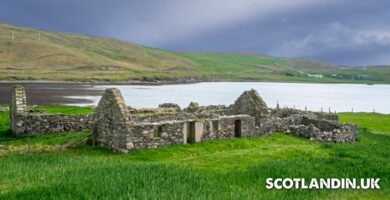
What were the horrors of the Highland Clearances? Historical Facts
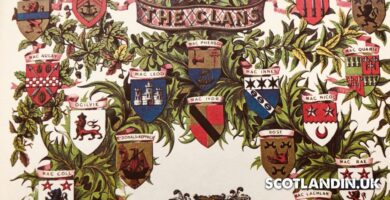
The Scottish Clans: Origins, Traditions, and Influence

Why is Mary, Queen of Scots so famous?

What is the history of Scotland name? Unraveling the Origins and Evolution
Explore Scotland’s Cultural Tapestry and Unique Offerings
Delve into Scotland’s vibrant culture, rooted in centuries of tradition and innovation. Unearth the captivating history that has shaped this land, from the ancient Celts to the legendary battles that echo through time. Our articles provide fascinating insights into Scottish folklore, literature, art, and the enduring spirit of its people.
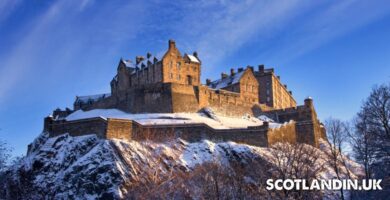
What are the best months to go to Edinburgh? A Complete Guide
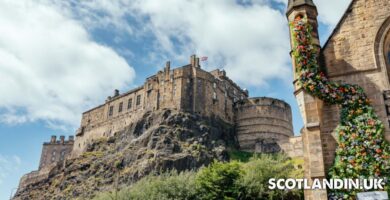
What to do in Scotland for 3 days?: Exploring Scotland’s Highlights
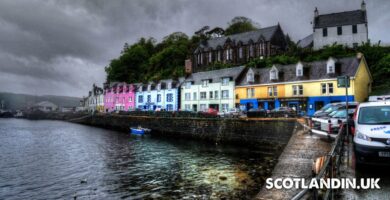
What to do in Isle of Skye when it Rains? 10 Things to do in Skye when it rains

The Royal Edinburgh Military Tattoo: A Spectacular Celebration of Scottish Culture
Unforgettable Experiences and Adventures Await
From the rugged landscapes of the Highlands to the vibrant cityscapes of Edinburgh and Glasgow, Scotland offers a wealth of experiences for every traveler. Discover the best accommodations to suit your style, be it luxurious hotels, cozy hostels, or charming guesthouses. Our comprehensive listings provide detailed information and unbiased reviews to help you make informed choices.
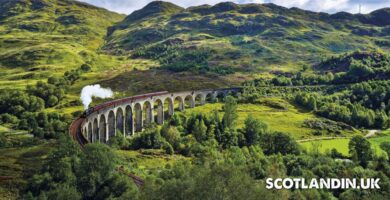
Where is a good base for the Scottish Highlands? Discover the Perfect Location

What is the best area to stay in Scotland? 10 of the best places to stay
Join the Festivities, Events and Festivals Galore
Still don’t know what things to do in Scotland?, This country is renowned for its lively festivals and cultural celebrations. Be part of the revelry at the world-famous Edinburgh Festival Fringe, immerse yourself in the haunting melodies of traditional bagpipes at the Highland Games, or witness the thrill of the Royal Edinburgh Military Tattoo. Our event calendar keeps you up to date with the latest happenings across the country.

What is The Up Helly Aa Fire Festival? Origin and Traditions

What is Scotland’s Stonehaven Fireball Festival?

What is the description of Edinburgh Fringe Festival?
Indulge in Gastronomic Delights and Quench Your Thirst
Tantalize your taste buds with Scotland’s diverse culinary offerings. Sample the finest Scotch whiskies, savor hearty traditional dishes like haggis and Cullen skink, or treat yourself to contemporary twists on Scottish cuisine. Our curated recommendations guide you to the best restaurants, pubs, and local eateries, ensuring a gastronomic adventure you won’t soon forget.
Embark on Unforgettable Tours and Adventures
Explore Scotland’s breathtaking landscapes and hidden gems with our recommended tours and itineraries. Traverse the stunning Isle of Skye, hike the rugged peaks of the Cairngorms National Park, or follow in the footsteps of legends along the iconic West Highland Way. Let us be your guide to unforgettable experiences that showcase the best Scotland has to offer.
Uncover Scotland’s Hidden Treasures with ScotlandIn.uk
Our team of passionate experts is dedicated to providing you with accurate and up-to-date information about Scotland. Join our newsletter to receive exclusive travel tips, the latest updates on events and festivals, and insider insights into Scotland’s hidden treasures.
Start your journey with ScotlandIn.uk and embark on an unforgettable adventure through this captivating country. Let us be your trusted companion as you uncover the rich tapestry of Scotland’s history, culture, and natural wonders. Experience Scotland like never before – the land of legends and untamed beauty awaits you!
Where is Scotland? A Guide to Exploring Scotland’s Natural Wonders
Have you ever wondered where Scotland is located? Prepare to embark on a captivating journey as we unveil the captivating location of Scotland. With its breathtaking landscapes, rich history, and vibrant culture, Scotland has become a dream destination for travelers from around the world. Let’s dive into the mysteries and wonders of this remarkable country.

Scotland on the Map: A Geographical Overview
Scotland is situated in the northern part of the United Kingdom, occupying approximately the northern third of the island of Great Britain. Bordered by England to the south and the Atlantic Ocean to the north and west, Scotland’s geographical location provides it with stunning coastlines and dramatic landscapes that are sure to leave you in awe.

Regions of Scotland: A Tapestry of Diversity
Scotland is divided into distinct regions, each offering its unique blend of history, natural beauty, and cultural heritage. From the Highlands and Islands to the Lowlands and the bustling cities, here are a few regions that define Scotland’s charm:
- The Highlands: Situated in the northern part of Scotland, the Highlands are renowned for their breathtaking landscapes and rugged beauty. Here, you’ll find majestic mountains, such as Ben Nevis, the highest peak in the British Isles, and the iconic Cairngorms National Park. The region is dotted with picturesque lochs like Loch Ness and Loch Lomond, and stunning glens like Glencoe, offering ample opportunities for outdoor activities like hiking, mountain biking, and wildlife spotting.
- The Islands: Scotland is home to numerous islands, each with its own distinct character and allure. The Isle of Skye is perhaps the most famous, known for its dramatic landscapes, including the iconic Old Man of Storr and the Fairy Pools. The Outer Hebrides, with their pristine white sandy beaches and rich Gaelic heritage, offer a serene and idyllic retreat. Other notable islands include the Orkney Islands, Shetland Islands, and the Inner Hebrides, each with its own unique history, wildlife, and natural wonders.
- The Lowlands: The Lowlands encompass the southern part of Scotland and are characterized by their rolling hills, fertile farmland, and vibrant cities. Edinburgh, the capital city, is a perfect blend of history and modernity, with its iconic Edinburgh Castle, the Royal Mile, and the annual Edinburgh Festival. Glasgow, known for its thriving arts scene and vibrant nightlife, offers a dynamic urban experience. The Lowlands also feature picturesque coastal towns, charming villages, and historic sites like Stirling Castle and the Antonine Wall.
- The Central Belt: The Central Belt is the urban heartland of Scotland, comprising the cities of Glasgow and Edinburgh, as well as the surrounding areas. This region offers a mix of cultural attractions, shopping districts, and entertainment options. It is also home to several historic landmarks, including the iconic Falkirk Wheel, the Kelpies, and the Forth Bridge, a UNESCO World Heritage site.
- The Northeast: The Northeast of Scotland is known for its dramatic coastline, charming fishing villages, and historic castles. Aberdeen, the region’s largest city, is often referred to as the “Granite City” due to its stunning gray stone buildings. The area also boasts picturesque coastal towns like Stonehaven and Fraserburgh, as well as the majestic Dunnottar Castle, perched on a cliff overlooking the North Sea.
- The Borders: Located in the southeastern part of Scotland, the Borders region is characterized by rolling hills, peaceful valleys, and charming market towns. This area is steeped in history and folklore, with numerous abbeys, historic houses, and ruins to explore. The region is also famous for its textile heritage, producing high-quality tweed and cashmere products.


Each of these regions contributes to Scotland’s rich tapestry of history, natural beauty, and cultural heritage. Whether you’re drawn to the wild landscapes of the Highlands, the vibrant cities of the Lowlands, or the tranquil charm of the islands, Scotland has something to offer every visitor.
Relief of Scotland: From Mountains to Lochs
Scotland’s relief is a testament to its diverse topography. The country is adorned with towering mountain ranges, including the majestic Ben Nevis, which stands as the highest peak in the British Isles.
Cascading waterfalls, such as the breathtaking Foyers Falls, and serene lochs like Loch Lomond dot the landscape, creating an enchanting environment that beckons exploration.
Mountains
Scotland is home to majestic mountain ranges, offering breathtaking vistas and challenging adventures for outdoor enthusiasts. The highest peak in Scotland and the entire British Isles is Ben Nevis, standing proudly at 1,345 meters (4,413 feet) in the Grampian Mountains.


Other notable mountain ranges include the Cairngorms, known for their stunning glacial valleys and exceptional hiking opportunities, and the Northwest Highlands, characterized by dramatic peaks and deep lochs.
Glens
Scotland’s glens are picturesque valleys carved by ancient glaciers, nestled between towering mountains. Glencoe, one of the most famous glens, is renowned for its dramatic beauty and historical significance. Its rugged terrain and steep-sided slopes create a sense of grandeur and awe.


Other notable glens include Glen Coe, Glenfinnan, and Glen Nevis, each offering its unique blend of natural beauty and cultural heritage.
Lochs
Scotland is blessed with numerous lochs, or lakes, which add a touch of enchantment to its landscape. Loch Ness, located in the Highlands, is famous worldwide for its mythical creature, the Loch Ness Monster, and draws visitors with its mysterious allure.


Loch Lomond, the largest freshwater loch in Great Britain, is renowned for its stunning beauty and is a popular spot for boating and water sports. Other notable lochs include Loch Awe, Loch Maree, and Loch Tay, each with its own distinct charm.
Coastal Features
Scotland’s coastline is a captivating blend of rugged cliffs, sandy beaches, and picturesque harbors. The North Coast 500, a scenic driving route that loops around the northern Highlands, offers breathtaking views of sea stacks, sea caves, and dramatic cliffs.

The Isle of Skye’s coastline is a haven for nature lovers, with its iconic rock formations, such as the Old Man of Storr and the Quiraing. Additionally, the Orkney Islands and Shetland Islands boast stunning coastal landscapes and abundant wildlife.
Islands
Scotland is surrounded by numerous islands, each with its unique geological features. The Inner Hebrides, including the Isle of Skye, Mull, and Islay, showcase a diverse range of landscapes, from dramatic mountains to white sandy beaches.

The Outer Hebrides, with their pristine coastline and captivating machair (coastal grasslands), offer a sense of untouched beauty. Orkney and Shetland, located to the northeast, boast ancient standing stones, rugged cliffs, and unique geological formations.
These are just a glimpse of the remarkable relief features that make up Scotland’s diverse and captivating landscape. Whether you’re exploring the majestic mountains, wandering through picturesque glens, or discovering the charm of the coastal regions and islands, Scotland’s relief will leave you in awe of its natural beauty and rich geological history.
Climate: Embracing the Scottish Weather
Scotland’s climate is known for its variability, where it’s not uncommon to experience all four seasons in a single day. The west coast tends to be milder due to the influence of the Gulf Stream, while the east coast experiences cooler temperatures. Be prepared for unpredictable weather and pack accordingly when visiting this beautiful country.
- Maritime Influence: Scotland’s climate is greatly influenced by its coastal location and the surrounding bodies of water, particularly the Atlantic Ocean and the North Sea. This maritime influence helps moderate temperatures, preventing extreme heat in summer and extreme cold in winter.
- Mild Winters: Scotland generally experiences mild winters compared to other parts of the UK at similar latitudes. The coastal areas and the western regions tend to be milder due to the influence of the Gulf Stream, a warm ocean current. However, in the higher elevations of the Highlands, winter temperatures can drop significantly, and snowfall is common, creating picturesque winter landscapes.
- Cool Summers: Summers in Scotland are generally cool and pleasant, with average temperatures ranging from 15°C to 20°C (59°F to 68°F). However, temperatures can occasionally reach the mid-20s Celsius (mid-70s Fahrenheit) during heatwaves. Summer days are long, with extended daylight hours due to Scotland’s northerly latitude, providing ample time to explore and enjoy outdoor activities.
- Rainfall: Scotland is known for its rainfall, and it’s advisable to always carry a waterproof jacket when visiting. The western and mountainous regions, such as the Highlands and the Western Isles, receive higher amounts of rainfall, while the eastern parts, including Edinburgh and Aberdeen, tend to be drier. The wettest months are typically from October to January, while the driest period is usually during spring.
- Wind: Scotland experiences frequent winds, especially along the coasts and in the mountainous areas. The western coast, known as the “Windward Coast,” tends to be windier due to the prevailing westerly winds blowing in from the Atlantic Ocean. Wind speeds can increase in elevated regions, making proper windproof clothing essential for outdoor activities.
- Microclimates: Scotland’s diverse landscapes contribute to the presence of microclimates across the country. Sheltered valleys and coastal areas can have their unique weather patterns, sometimes differing significantly from the surrounding regions. This adds to the richness and unpredictability of Scotland’s climate.
It’s essential to be prepared for changing weather conditions when visiting Scotland. Layered clothing, waterproof gear, and sturdy footwear are recommended, allowing you to adapt to the varying elements.
Scotland’s ever-changing weather, though challenging at times, contributes to the country’s enchanting beauty and offers a unique experience for those exploring its stunning landscapes and charming cities.
Plant and Animal Life: Nature’s Bounty
Scotland is a treasure trove of biodiversity, with its rich flora and fauna. The country is home to enchanting forests, including the ancient Caledonian Forest, where you can discover unique plant species and spot elusive wildlife such as red deer, golden eagles, and red squirrels.
The coastal regions are havens for seabirds, seals, and even dolphins, offering nature enthusiasts a chance to witness Scotland’s thriving ecosystems.
Flora

- Woodlands: Scotland boasts beautiful woodlands, including native broadleaf forests and commercial plantations. Iconic tree species found in Scottish woodlands include oak, birch, beech, and pine. Caledonian pine forests, such as those in the Cairngorms National Park, are particularly noteworthy, supporting a rich biodiversity of plant and animal life.
- Heather and Moorland: Scotland’s moorlands and upland areas are adorned with vibrant heather, which paints the landscape in hues of purple during the summer months. Heather provides an essential habitat for various bird species and is a symbol of Scotland’s natural beauty.
- Coastal Flora: Scotland’s coastal regions host a variety of flora, including salt-tolerant plants like sea thrift, sea rocket, and sea campion. Sand dunes are adorned with plants such as marram grass and lyme grass, which help stabilize the dunes and provide a habitat for wildlife.
- Wildflowers: Scotland’s meadows and grasslands come alive with a tapestry of wildflowers during the spring and summer. Bluebells, primroses, wild orchids, and cowslips are just a few examples of the stunning wildflowers that adorn the countryside.
Fauna

- Red Deer: The red deer is Scotland’s largest land mammal and can be found in various habitats, including woodlands, moorlands, and mountains. They are most commonly spotted in the Highlands and on the islands.
- Highland Cattle: The iconic Highland cattle, with their long horns and shaggy coats, are synonymous with Scotland. These hardy, long-haired cattle graze in the Highlands and contribute to the maintenance of heathland and moorland habitats.
- Golden Eagle: Scotland is home to the majestic golden eagle, one of the country’s most iconic bird species. With its impressive wingspan and soaring flight, the golden eagle is a symbol of Scotland’s wild and untamed landscapes.
- Red Squirrel: The red squirrel is a native species in Scotland, primarily found in woodland areas. Although their numbers have declined, conservation efforts are in place to protect this charming and endangered species.
- Otter: Scotland’s rivers, lochs, and coastal areas provide a habitat for otters. These elusive and playful creatures can often be spotted swimming, diving, and hunting for fish along the waterways.
- Atlantic Salmon: Scotland’s rivers are famous for their populations of Atlantic salmon, attracting anglers from around the world. These remarkable fish migrate upstream to spawn, providing a spectacle for nature enthusiasts.
- Seabird Colonies: Scotland’s coastal cliffs and islands are home to thriving seabird colonies, including puffins, gannets, razorbills, and kittiwakes. The Isle of May, the Bass Rock, and St. Kilda are renowned for their impressive seabird populations.
These are just a few examples of the fascinating flora and fauna that can be found in Scotland. The country’s rich biodiversity and stunning natural landscapes make it a haven for nature lovers and wildlife enthusiasts.
Whether you’re exploring the woodlands, moorlands, coastal areas, or mountains, Scotland’s flora and fauna are sure to captivate and inspire you.
Scotland’s Timeless Allure
Scotland’s captivating location and stunning natural wonders make it a must-visit destination for travelers seeking adventure, history, and cultural immersion. From the rugged beauty of the Highlands to the historic charm of its cities, Scotland has something to offer every visitor. So, pack your bags and embark on an unforgettable journey to uncover the secrets of this extraordinary land.
Remember, Scotland is more than just a location on the map; it’s an experience that will stay with you for a lifetime